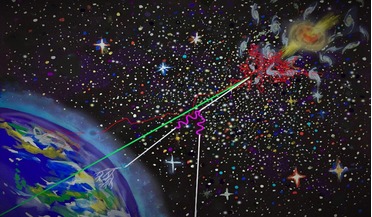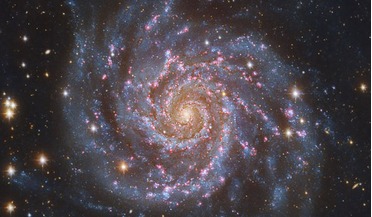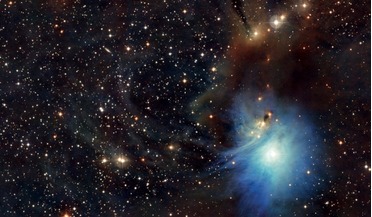 July 2017
Hunting for neutrinos in the ice of Antarctica
July 2017
Hunting for neutrinos in the ice of Antarctica
... an even bigger detector either requires an enormous amount of funding when using the same technology or a different approach. A neutrino can only be observed indirectly by detecting its interaction products i.e. the tell-tale sign that points to its...
 13 April 2016
The mystery of neutrino mass to be solved by a calcium isotope
13 April 2016
The mystery of neutrino mass to be solved by a calcium isotope
... by analysing a special decay of calcium-48, whose life, which lasts trillions of years, depends on the unknown mass of neutrinos. Neutrinos are subatomic particles produced by the decay of radioactive elements and are elementary particles that lack...
 13 July 2018
Neutrino discovery helps resolve a century-old riddle
13 July 2018
Neutrino discovery helps resolve a century-old riddle
... is directed towards (or nearly towards) Earth. Singling out a particular blazer known as TXS 0506+056 as a potential source of neutrinos, IceCube directed its corroborators, NASA's orbiting Fermi Gamma-ray Space Telescope and the Major Atmospheric...
 24 January 2018
Scientists uncover common origin for ultrahigh-energy particles
24 January 2018
Scientists uncover common origin for ultrahigh-energy particles
... phenomena are physically connected to each other by the same class of astrophysical sources, other mechanisms of high-energy neutrino and gamma-ray production still need to be investigated to rule out (or confirm) their origin. Just how robust...
 16 December 2016
Mini-spiral galaxies may transform how dark matter is perceived
16 December 2016
Mini-spiral galaxies may transform how dark matter is perceived
...Karukes. "Our observations, however, disagree with this notion." Non-baryonic matter are particles such as electrons or neutrinos, which are classed as leptons. Baryonic matter on the other hand is made up of particles found in an atomic nuclei, such...
 March 2018
Exploring the extreme universe
March 2018
Exploring the extreme universe
... law of gravity in the framework of general relativity. Multi-messenger With the recent discovery of high energy astrophysical neutrinos by the IceCube detector buried in the ices of Antarctica and the first direct observation of gravitational waves...